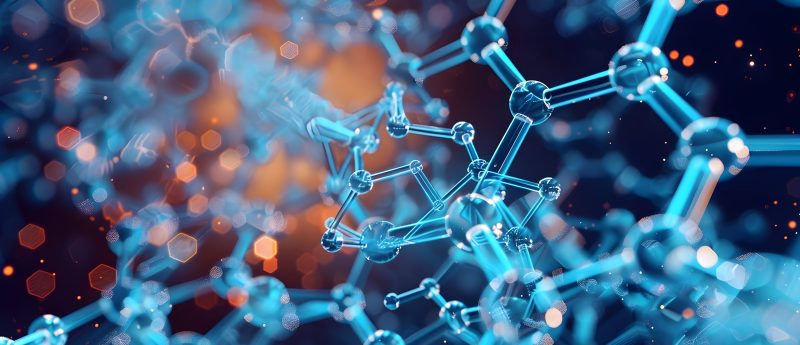Convergence of LBA/LC–MS in bioanalysis of large molecules – Part 1

Patrick Bennett is the Executive Director of Biomarker Laboratories at PPD. Patrick has nearly 30 years of experience in pharmaceutical analysis. This includes Bristol-Myers Squibb Department of Metabolism and Pharmacokinetics, Advion Biosciences (now Quintiles) where he was the Laboratory Director and Tandem Labs where he was Vice President. In 2010, Patrick joined Thermo Fisher Scientific as Director of Global Strategic Marketing within the Chromatography and Mass Spectrometry Division. In 2014, Patrick joined PPD to create a new Biomarker Division, which has dedicated laboratory facilities providing Molecular Genomics, flow cytometry, ligand binding and LC-MS based biomarker services. Patrick earned a BS degree in Toxicology and a MS degree in Pharmacology St. John’s University and an MBA from Syracuse University.
Liquid chromatography – mass spectrometry (LC–MS) including both triple quadrupole (LC–MS/MS) and high resolution mass spectrometers (HRMS) used for quantitative bioanalysis has its early roots in the late 1980’s with significant adoption by the 1990’s. The growth of biotechnology in the development of biopharmaceuticals resulted in the widespread use of ligand binding assays (LBA) for the quantitation of these large molecules. The more recent explosion of more complex and potent biologics, in particular, monoclonal (mAb) based molecules and the increased use of large molecule biomarkers has resulted in a convergence of these two technologies. This commentary provides a brief overview of the LBA/LC–MS convergence in bioanalysis of large molecules.
Technology Adoption
Liquid chromatography–mass spectrometry (LC–MS) including both triple quadrupole (LC–MS/MS) and high resolution mass spectrometers (HRMS) used for quantitative bioanalysis has its early roots in the late 1980’s with significant adoption by the 1990’s. Prior to this period, the majority of drugs being developed were small molecules (< 1,000 KD) and analyzed using some form of high pressure liquid chromatography (HPLC), gas chromatography (GC) or gas chromatography –mass spectrometry (GC–MS). However, the commercial LC–MS systems in the early 1990’s were extremely sensitive, selective, robust and relatively easy to use compared to the other technologies. Furthermore, these attributes allow users to develop high quality quantitative methods significantly faster. For these reasons, LC–MS essentially eliminated the use of HPLC, GC and GC–MS for pharmaceutical drug discovery and development bioanalysis.
ELISA, RIA and other types of ligand binding methods were typically developed for diagnostic testing in the areas of therapeutic drug monitoring, drugs of abuse testing, toxicology, assessment of well-established endogenous markers (e.g. thyroid markers, cytokines, various immunoglobulins, antigens, etc.) or other real time medically related purposes. During the first wave of biotechnology in the 1980’s, these techniques were adopted for quantitation of peptides, proteins and monoclonal antibodies. Concurrent with this, the field of proteomics was immersed in using mass spectrometry for the identification and characterization of proteins for various research purposes. The mass spectrometers were typically ion trap mass spectrometers (ITMS), Time of Flight (ToF), quadrupole TOF (Q ToF), Ion cyclotron resonance mass spectrometers (ICRMS) or orbitrap mass spectrometers.
Another important technology contributing to the growth of LC–MS being adopted into bioanalysis is the advancement in solid phase extraction (SPE) technology. These advancements resulted in simpler extraction protocols and in many cases, higher recovery compared to other extraction techniques and older SPE technologies. This technology also assisted in the growth in sample processing automation and in some manner has paved the way for newer “solid phase” based technologies.
In the late 1990’s, a second wave of biotechnology brought significant advancements, resulting in a flood of new biopharmaceutical companies and causing many existing pharmaceutical companies to rebrand themselves as biopharmaceutical companies. Vendors in biotechnology have also been working with scientists to improve existing technologies, develop new technologies and introduce new and/or improved reagents, instruments and software designed to assist in the detection, characterization and quantitation of biopharmaceuticals (biologics).
Convergence
The combination of the explosive growth of ligand binding bioanalysis in drug development and the predominant use of LC/MS for quantitative bioanalysis resulted in significant discussion on the differences between the two technologies – specifically around the appropriate regulatory requirements for method validation and sample analysis[1–10].
Until very recently, bioanalytical mass spectrometrists were segmented into several groups:
- Small molecule qualitative for structural analysis of synthetic materials, metabolites, impurities, leachables and extractables
- Regulated small molecule quantitative bioanalysis
- Discovery small molecule quantitative bioanalysis
- Proteomics for large molecule identification, characterization and targeted quantitation
From a large molecule and ligand binding assay (LBA) perspective, the time and place to use LBA for bioanalysis was clear cut based on the size of the molecule. Challenges were primarily related to obtaining appropriate reagents, developing methods and characterizing the method performance.
With the continued improvement in both the LC and MS technology and the increased experience of bioanalytical scientists, significant growth in the use of LC–MS for quantitative bioanalysis of large molecules is occurring. It is now becoming clear that the combination of LBA techniques for highly specific sample isolation combined with the high specificity capability of LC–MS systems presents new opportunities for the field of bioanalytics. This convergence is changing how these two scientific disciplines interact with respect to bioanalytical science, regulatory compliance, project teams, departmental structure/responsibilities and technological adoption.
Drivers for this convergence include increases in potency of biomolecular drugs, complexity of antibodies (e.g. antibody fragments, bispecific mAb, fusion proteins and antibody drug conjugates) and reliance on associated biomarkers with specific isoforms or post translational modifications. An additional driver may be time-based. LC–MS based methods don’t require a highly refined or selective reagent to provide early stage bioanalysis. This is true for novel biomarkers as well as drugs that are still in early development and don’t have appropriate reagents available.
Three additional shifts that are bringing both LBA and LC–MS capabilities together are the explosive growth in monoclonal antibody therapies including antibody drug conjugates (ADCs), adoption of LC–MS in high throughput clinical diagnostic laboratories, and use of biomarkers in drug discovery and development. The latter two categories can be small molecule or large molecule. However, most high throughput, high sensitivity methods for large molecule LC–MS require some form of ligand binding technology to ensure the cleanest sample possible and to achieve the highest potential for sensitive methods.
This convergence has resulted in the need for significant discussion around the appropriate regulatory requirements and implementation strategies. It is important that these discussions focus on both the similarities as well as differences of each technology. These include how various groups interact with one another, organizational structures, standard operational procedures (SOPs), best business practices, sharing technical experience, etc [11].
References
- US. Food and Drug Administration. Guidance for Industry: Bioanalytical Method Validation. US Department of Health and Human Services, US FDA, Center for Drug Evaluation and Research, MD, USA (2001). www.fda.gov/downloads/Drugs/Guidances/ucm070107.pdf
- DeSilva B, Smith W, Weiner R et al. Recommendations for the bioanalytical method validation of ligand-binding assays to support pharmacokinetic assessments of macromolecules. Pharm Res 20 (11), 1885–900 (2003).
- AAPS, editor AAPS Workshop Crystal City V: Quantitative Bioanalytical Methods Validation and Implementation:The 2013 Revised FDA Guidance. AAPS Workshop Crystal City V: Quantitative Bioanalytical Methods Validation and Implementation:The 2013 Revised FDA Guidance, Baltimore, MD (2013)
- US Food and Drug Administration Guidance for Industry: Bioanalytical Method Validation-Draft Guidance. US Department of Health and Human Services, US FDA, Center for Drug Evaluation and Research, MD, USA (2013). www.fda.gov/downloads/drugs/guidancecomplianceregulatoryinformation/guidances/ucm368107.pdf
- AAPS and US FDA Crystal City VI workshop on bioanalytical method validation for biomarkers. Bioanalysis 8(3), 163-7. Epub ahead of publication (2016)
- Knutsson M, Schmidt R, Timmerman P. LC–MS/MS of large molecules in a regulated bioanalytical environment—which acceptance criteria to apply? Bioanalysis 5(18), 2211–4 (2013)
- Jenkins R, Dufield D, Zhang YJ et al. White Paper: Recommendations for validation of LC–MS/MS Bioanalytical Methods for Protein Biotherapeutics. The AAPS Journal 17 (1), 1–16 (2014).
- Carr SA, Abbatiello SE, Ackermann BL et al. Targeted peptide measurements in biology and medicine: best practices for mass spectrometry-based assay development using a fit-for-purpose approach. Mol Cell Proteomics Mar 13(3), 907-17 (2014)
- Jenkins R,et al. “Recommendations for Validation of LC-MS/MS Bioanalytical Methods for Protein Biotherapeutics.” The AAPS Journal1 (2015): 1–16. PMC. Web. 13 Apr. 2016
- 21 July 2011 EMEA/CHMP/EWP/192217/2009 Rev.1 Corr.* Committee for Medicinal Products for Human Use (CHMP) Guideline on bioanalytical method validation.
- Grant RP, Hoofnagle AN. From Lost in Translation to Paradise Found: Enabling Protein Biomarker Method Transfer by Use of Mass Spectrometry. Clinical Chemistry 60, 7000–000 (2014)
The author would like to thank Bruce Stouffer and Edward Tabler from PPD and Kevin Meyer from Perfinity for their thorough review and assistance in the preparation of this commentary.
Read ‘Convergence of LBA/LC–MS in bioanalysis of large molecules – Part 2’ here.






